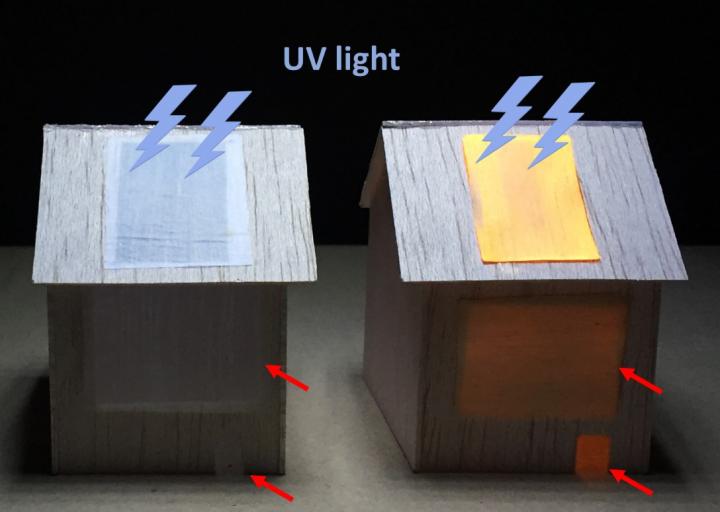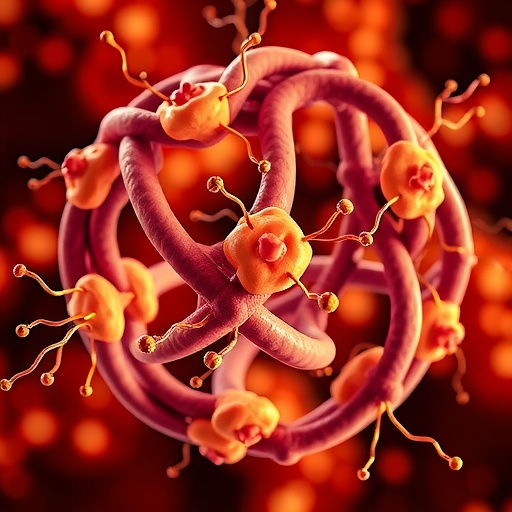
Credit: Adapted from ACS Nano 2020, DOI: 10.1021/acsnano.0c06110
The right indoor lighting can help set the mood, from a soft romantic glow to bright, stimulating colors. But some materials used for lighting, such as plastics, are not eco-friendly. Now, researchers reporting in ACS Nano have developed a bio-based, luminescent, water-resistant wood film that could someday be used as cover panels for lamps, displays and laser devices.
Consumer demand for eco-friendly, renewable materials has driven researchers to investigate wood-based thin films for optical applications. However, many materials developed so far have drawbacks, such as poor mechanical properties, uneven lighting, a lack of water resistance or the need for a petroleum-based polymer matrix. Qiliang Fu, Ingo Burgert and colleagues wanted to develop a luminescent wood film that could overcome these limitations.
The researchers treated balsa wood with a solution to remove lignin and about half of the hemicelluloses, leaving behind a porous scaffold. The team then infused the delignified wood with a solution containing quantum dots — semiconductor nanoparticles that glow in a particular color when struck by ultraviolet (UV) light. After compressing and drying, the researchers applied a hydrophobic coating. The result was a dense, water-resistant wood film with excellent mechanical properties. Under UV light, the quantum dots in the wood emitted and scattered an orange light that spread evenly throughout the film’s surface. The team demonstrated the ability of a luminescent panel to light up the interior of a toy house. Different types of quantum dots could be incorporated into the wood film to create various colors of lighting products, the researchers say.
###
The authors acknowledge funding from the Royal Society of New Zealand Te Apārangi and the New Zealand Ministry of Business, Innovation and Employment.
The abstract that accompanies this paper is available here.
The American Chemical Society (ACS) is a nonprofit organization chartered by the U.S. Congress. ACS’ mission is to advance the broader chemistry enterprise and its practitioners for the benefit of Earth and its people. The Society is a global leader in providing access to chemistry-related information and research through its multiple research solutions, peer-reviewed journals, scientific conferences, eBooks and weekly news periodical Chemical & Engineering News. ACS journals are among the most cited, most trusted and most read within the scientific literature; however, ACS itself does not conduct chemical research. As a specialist in scientific information solutions (including SciFinder® and STN®), its CAS division powers global research, discovery and innovation. ACS’ main offices are in Washington, D.C., and Columbus, Ohio.
To automatically receive news releases from the American Chemical Society, contact [email protected].
Follow us:
Twitter | Facebook
Media Contact
Katie Cottingham
[email protected]




